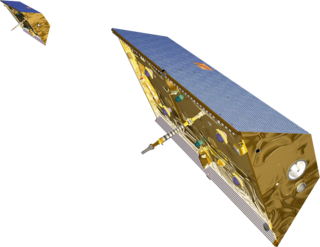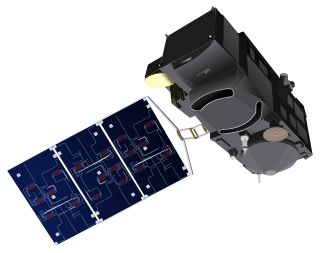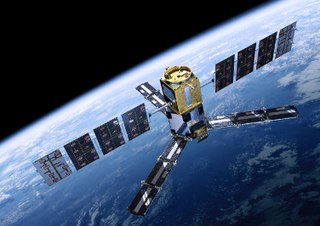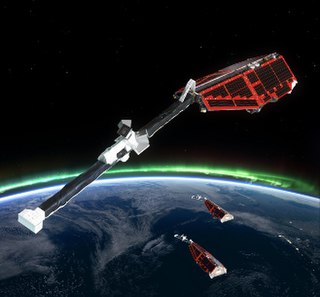 W
WThe Gravity Recovery and Climate Experiment (GRACE) was a joint mission of NASA and the German Aerospace Center (DLR). Twin satellites took detailed measurements of Earth's gravity field anomalies from its launch in March 2002 to the end of its science mission in October 2017. The Gravity Recovery and Climate Experiment Follow-On (GRACE-FO) is a continuation of the mission on near-identical hardware, launched in May 2018.
 W
WThe Gravity Field and Steady-State Ocean Circulation Explorer (GOCE) was the first of ESA's Living Planet Programme satellites intended to map in unprecedented detail the Earth's gravity field. The spacecraft's primary instrumentation was a highly sensitive gravity gradiometer consisting of three pairs of accelerometers which measured gravitational gradients along three orthogonal axes.
 W
WPROBA-2 is the second satellite in the European Space Agency's series of PROBA low-cost satellites that are being used to validate new spacecraft technologies while also carrying scientific instruments. PROBA-2 is a small satellite (130 kg) developed under an ESA General Support Technology Program (GSTP) contract by a Belgian consortium led by Verhaert of Kruibeke, Belgium. The nominal mission duration was two years. As of 2019, the mission continues.
 W
WQuakesat is an Earth observation nanosatellite based on three CubeSats. It was designed to be a proof of concept for space-based detection of extremely low frequency signals, thought by some to be earthquake precursor signals. The science behind the concept is disputed.
 W
WSentinel-3A is a European Space Agency Earth observation satellite dedicated to oceanography which launched on 16 February 2016. It was built as a part of the Copernicus Programme, and is the first of four planned Sentinel-3 satellites. Its sister satellite, Sentinel-3B, launched on 25 April 2018. After completing initial commissioning, each satellite was handed over to EUMETSAT for the routine operations phase of the mission. Two recurrent satellites - Sentinel-3C and Sentinel-3D - will follow in approximately 2024 and 2028 respectively to ensure continuity of the Sentinel-3 mission.
 W
WSentinel-3B is a European Space Agency Earth observation satellite dedicated to oceanography which launched on 25 April 2018. It was built as a part of the Copernicus Programme, and is the second of four planned Sentinel-3 satellites.
 W
WSentinel-5 Precursor (Sentinel-5P) is an Earth observation satellite developed by ESA as part of the Copernicus Programme to close the gap in continuity of observations between Envisat and Sentinel-5.
 W
WSoil Moisture and Ocean Salinity (SMOS) is a satellite which forms part of ESA's Living Planet Programme. It is intended to provide new insights into Earth's water cycle and climate. In addition, it is intended to provide improved weather forecasting and monitoring of snow and ice accumulation.
 W
WSwarm is a European Space Agency (ESA) mission to study the Earth's magnetic field. High-precision and high-resolution measurements of the strength, direction and variations of the Earth's magnetic field, complemented by precise navigation, accelerometer and electric field measurements, will provide data for modelling the geomagnetic field and its interaction with other physical aspects of the Earth system. The results offer a view of the inside of the Earth from space, enabling the composition and processes of the interior to be studied in detail and increase our knowledge of atmospheric processes and ocean circulation patterns that affect climate and weather.